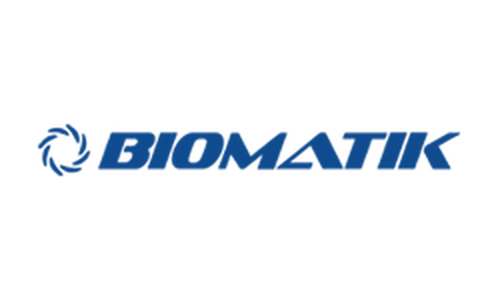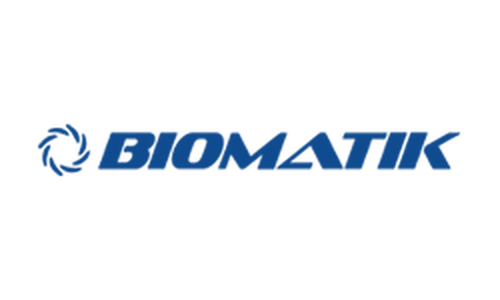Product Description
Recombinant Human AT-rich interactive domain-containing protein 1A (ARID1A), partial is available at Gentaur for Next week Delivery.
Gene Name: ARID1A
Alternative Names : B120 BRG1-associated factor 250 Short name: BAF250 BRG1-associated factor 250a Short name: BAF250A Osa homolog 1 Short name: hOSA1 SWI-like protein SWI/SNF complex protein p270 SWI/SNF-related, matrix-associated, actin-dependent regulator of chromatin subfamily F member 1 hELD C1orf4, OSA1, SMARCF1
Expression Region : 1976-2231aa
AA Sequence : SLAKRCVCVSNTIRSLSFVPGNDFEMSKHPGLLLILGKLILLHHKHPERKQAPLTYEKEEEQDQGVSCNKVEWWWDCLEMLRENTLVTLANISGQLDLSPYPESICLPVLDGLLHWAVCPSAEAQDPFSTLGPNAVLSPQRLVLETLSKLSIQDNNVDLILATPPFSRLEKLYSTMVRFLSDRKNPVCREMAVVLLANLAQGDSLAARAIAVQKGSIGNLLGFLEDSLAATQFQQSQASLLHMQNPPFEPTSVDMM
Sequence Info : Partial
Tag Info : N-terminal 10xHis-tagged and C-terminal Myc-tagged
Theoretical MW : 32.4 kDa
Storage Buffer : Tris/PBS-based buffer, 5%-50% glycerol. If the delivery form is lyophilized powder, the buffer before lyophilization is Tris/PBS-based buffer, 6% Trehalose, pH 8.0.
Endotoxin Level : Not tested-
Biological Activity : Not tested
Storage : Short term: -20°C; Long term: -80°C. Minimize freeze and thaw cycles.
Research Area : Cancer
Restriction : For Research Use Only. Not for use in diagnostic procedures, drug use, or for administration to humans or animals.
Relevance : Involved in transcriptional activation and repression of select genes by chromatin remodeling (alteration of DNA-nucleosome topology). Binds DNA non-specifically. Belongs to the neural progenitors-specific chromatin remodeling complex (npBAF complex) and the neuron-specific chromatin remodeling complex (nBAF complex). During neural development a switch from a stem/progenitor to a post-mitotic chromatin remodeling mechanism occurs as neurons exit the cell cycle and become committed to their adult state. The transition from proliferating neural stem/progenitor cells to post-mitotic neurons requires a switch in subunit composition of the npBAF and nBAF complexes. As neural progenitors exit mitosis and differentiate into neurons, npBAF complexes which contain ACTL6A/BAF53A and PHF10/BAF45A, are exchanged for homologous alternative ACTL6B/BAF53B and DPF1/BAF45B or DPF3/BAF45C subunits in neuron-specific complexes (nBAF). The npBAF complex is essential for the self-renewal/proliferative capacity of the multipotent neural stem cells. The nBAF complex along with CREST plays a role regulating the activity of genes essential for dendrite growth
Function : Involved in transcriptional activation and repression of select genes by chromatin remodeling (alteration of DNA-nucleosome topology). Component of SWI/SNF chromatin remodeling complexes that carry out key enzymatic activities, changing chromatin structure by altering DNA-histone contacts within a nucleosome in an ATP-dependent manner. Binds DNA non-specifically. Belongs to the neural progenitors-specific chromatin remodeling complex (npBAF complex) and the neuron-specific chromatin remodeling complex (nBAF complex). During neural development a switch from a stem/progenitor to a postmitotic chromatin remodeling mechanism occurs as neurons exit the cell cycle and become committed to their adult state. The transition from proliferating neural stem/progenitor cells to postmitotic neurons requires a switch in subunit composition of the npBAF and nBAF complexes. As neural progenitors exit mitosis and differentiate into neurons, npBAF complexes which contain ACTL6A/BAF53A and PHF10/BAF45A, are exchanged for homologous alternative ACTL6B/BAF53B and DPF1/BAF45B or DPF3/BAF45C subunits in neuron-specific complexes (nBAF). The npBAF complex is essential for the self-renewal/proliferative capacity of the multipotent neural stem cells. The nBAF complex along with CREST plays a role regulating the activity of genes essential for dendrite growth (By similarity).
Involvement in disease : Coffin-Siris syndrome 2 (CSS2)
Subcellular location : Nucleus
Protein Families :
Tissue Specificity : Highly expressed in spleen, thymus, prostate, testis, ovary, small intestine, colon, and PBL, and at a much lower level in heart, brain, placenta, lung, liver, skeletal muscle, kidney, and pancreas.
Paythway :
Uniprot ID : O14497
 Euro
Euro
 British Pound
British Pound
 US Dollar
US Dollar








